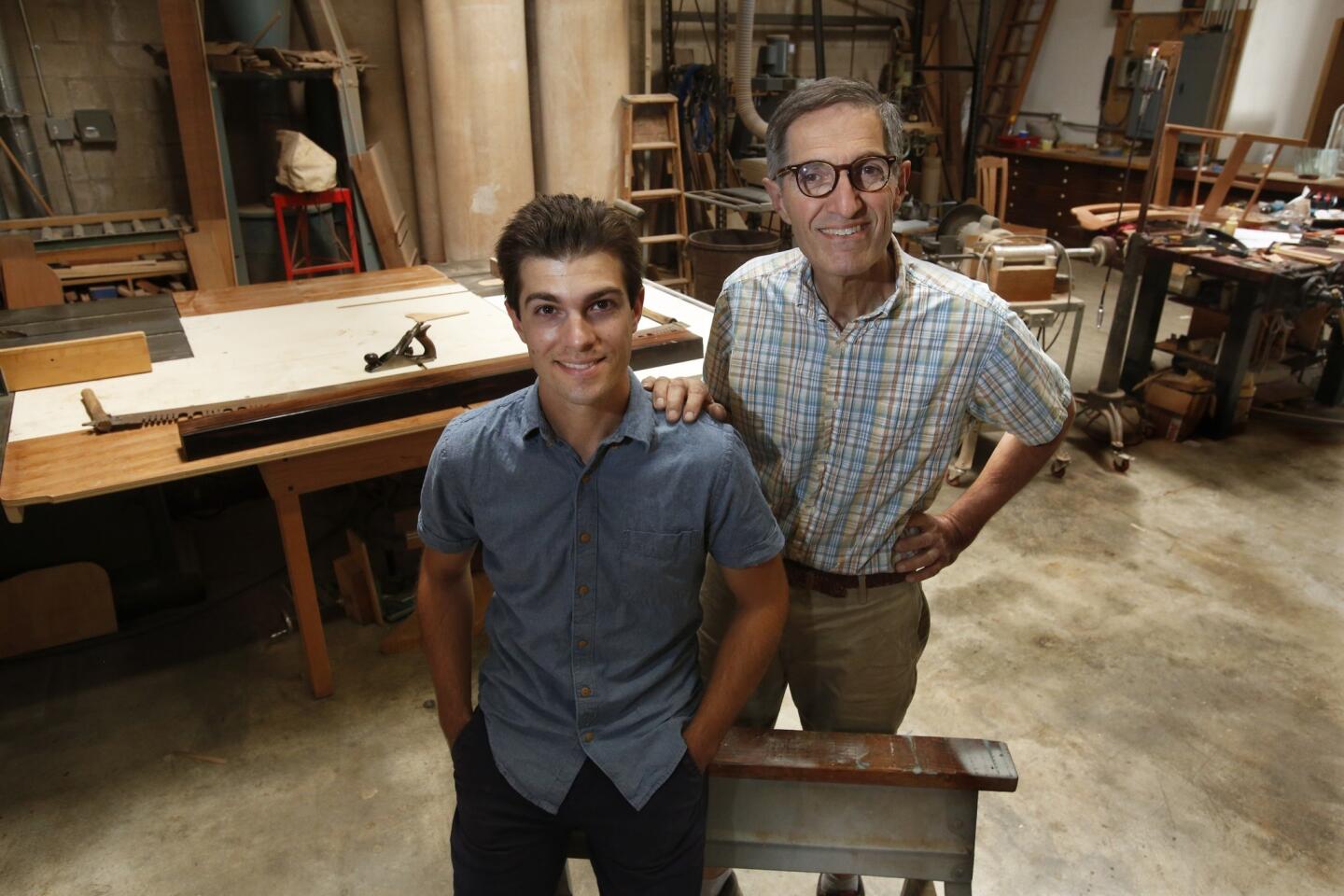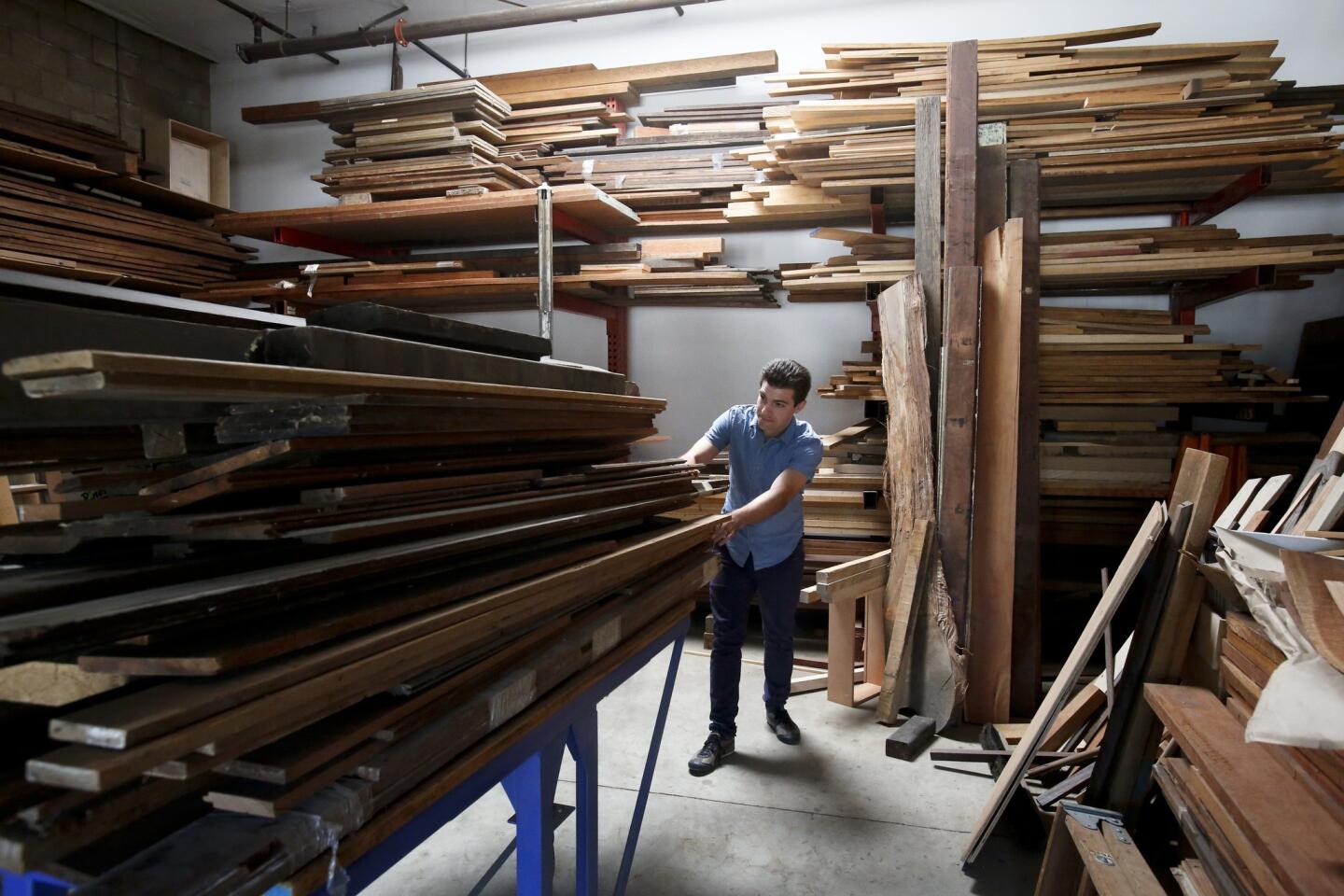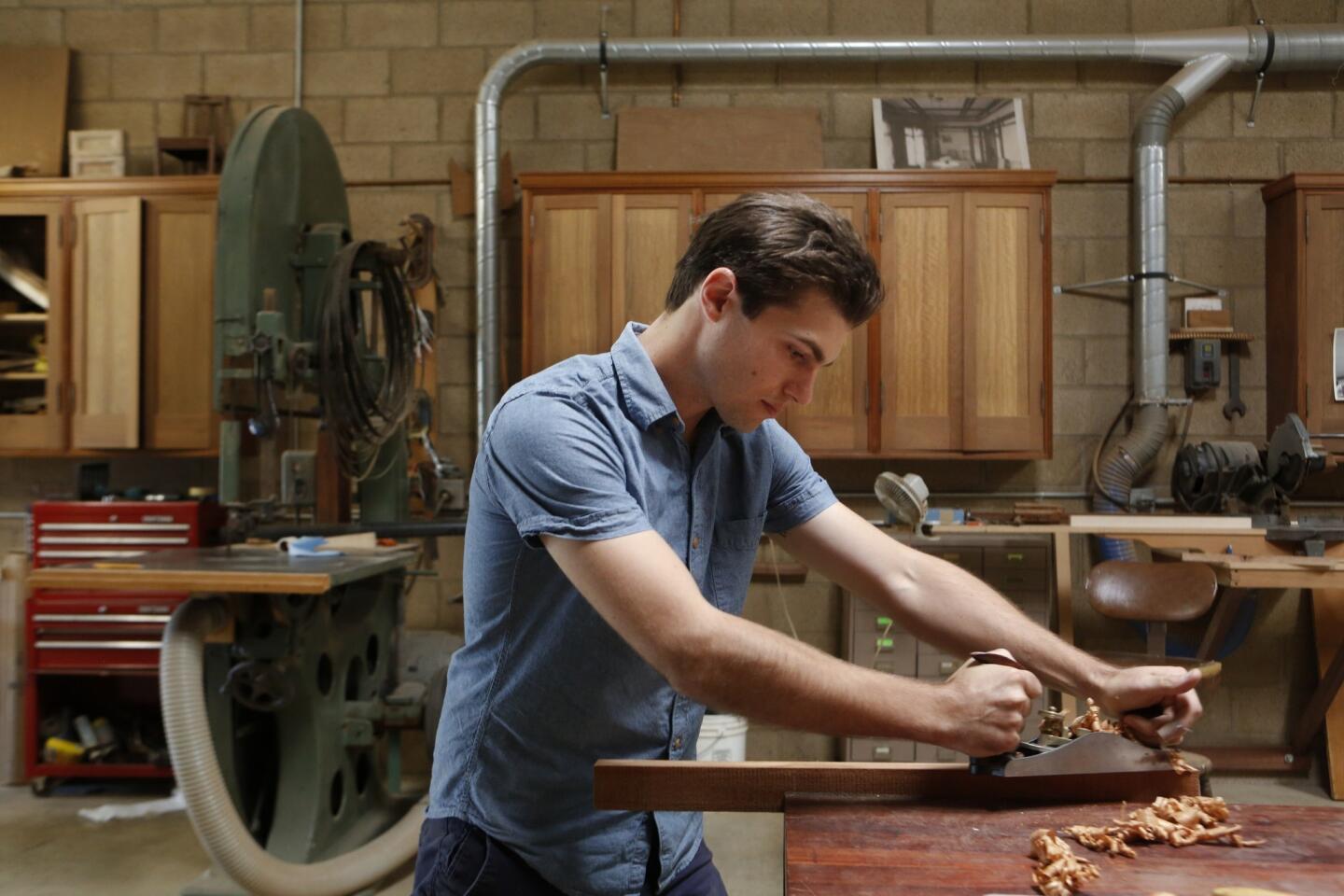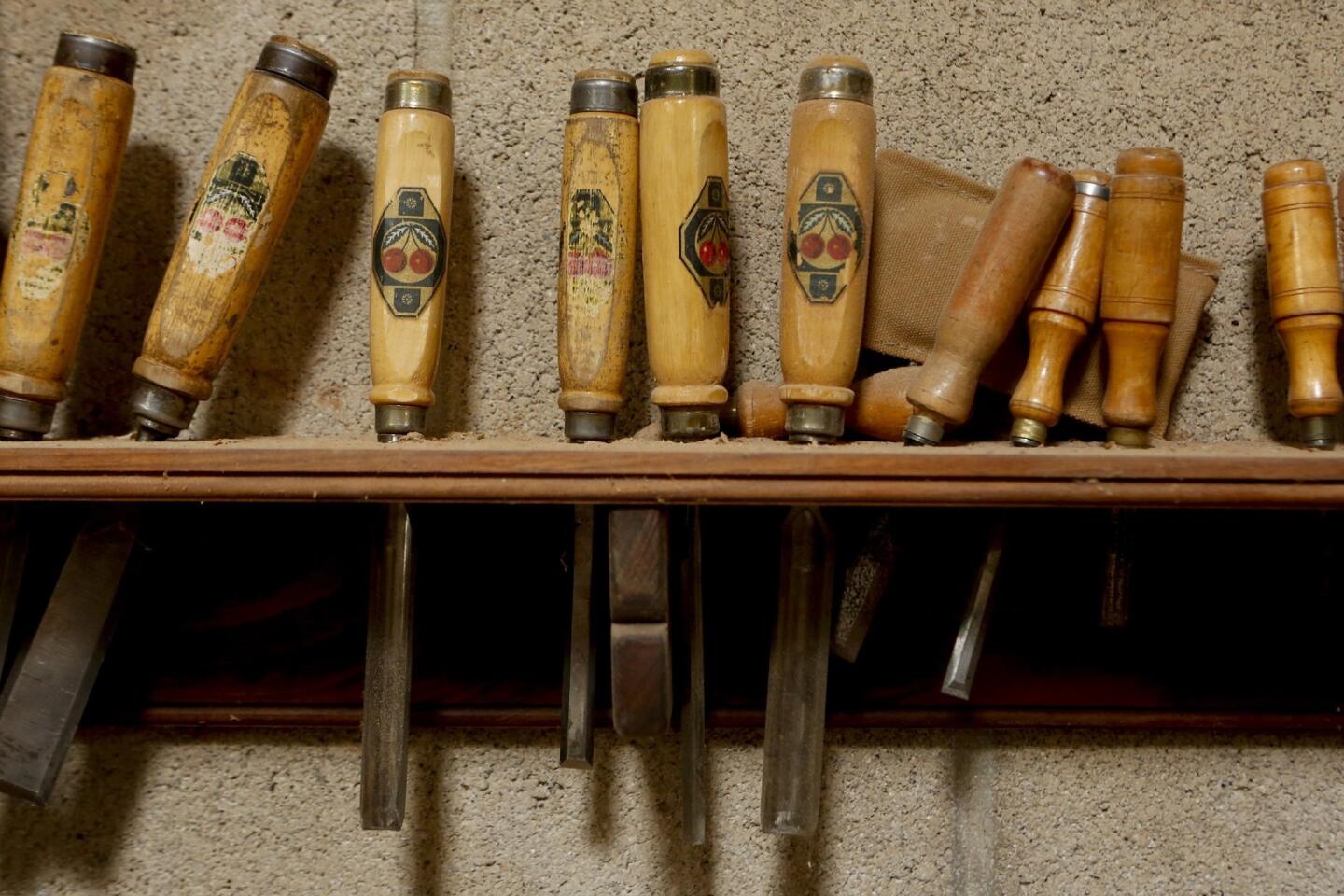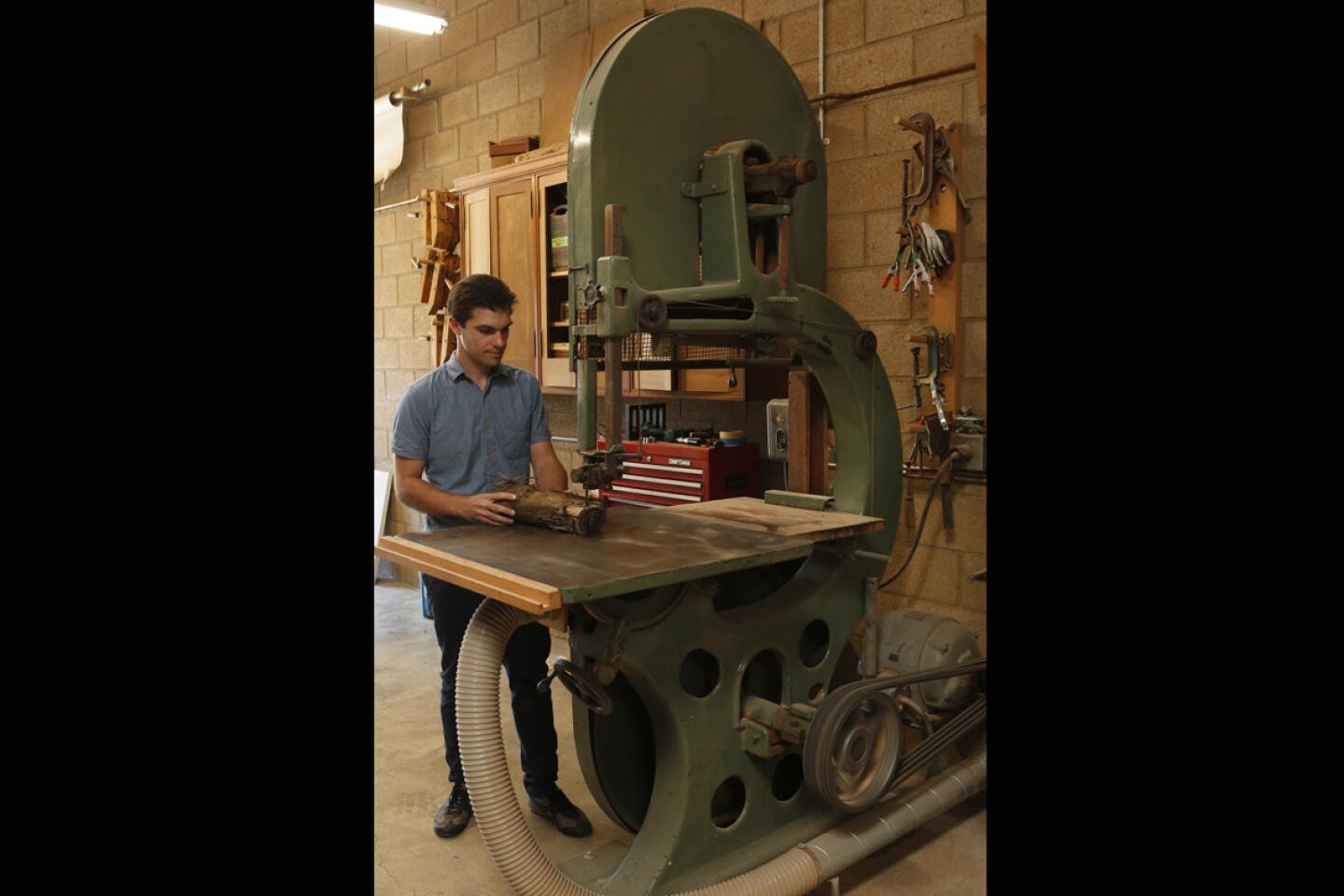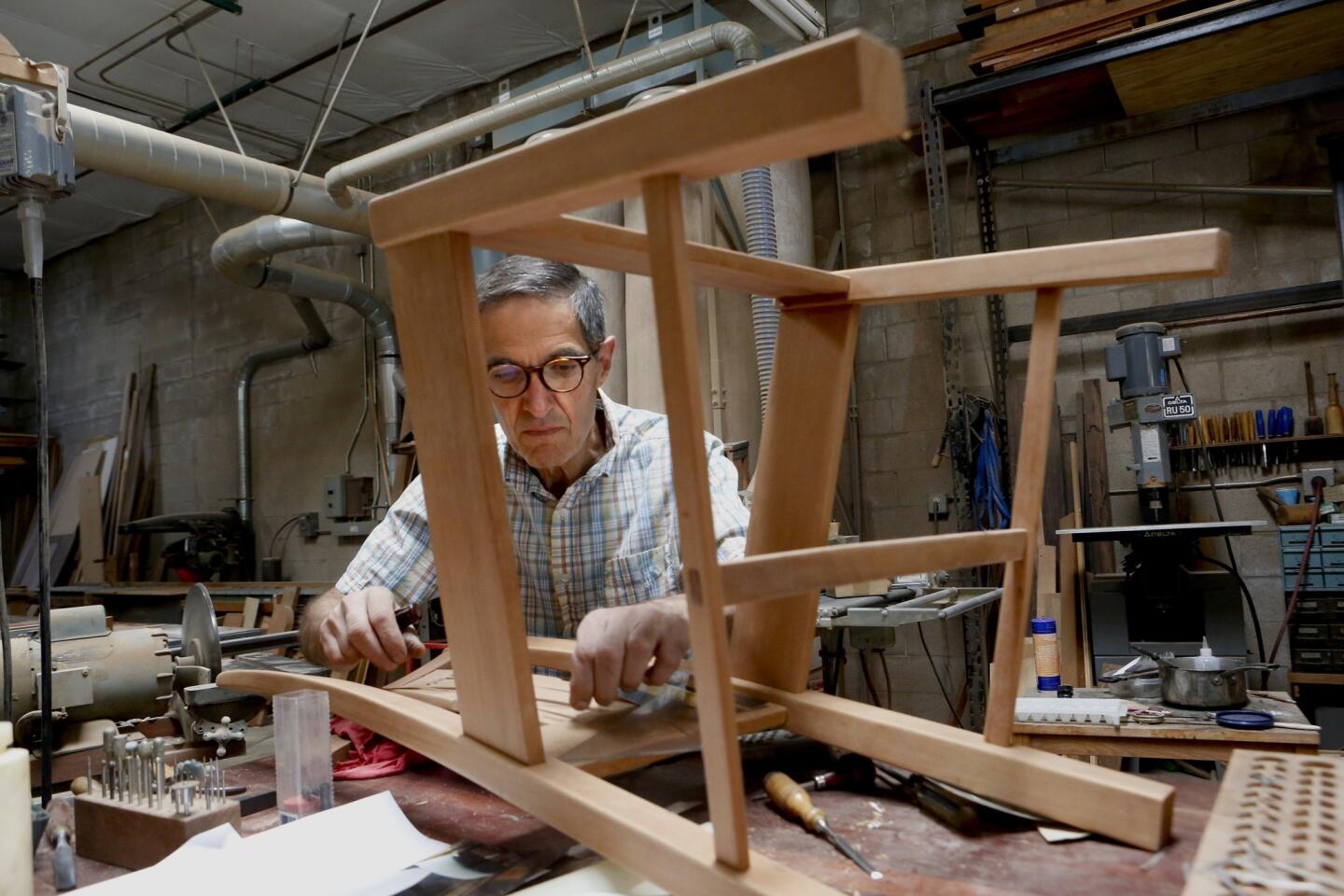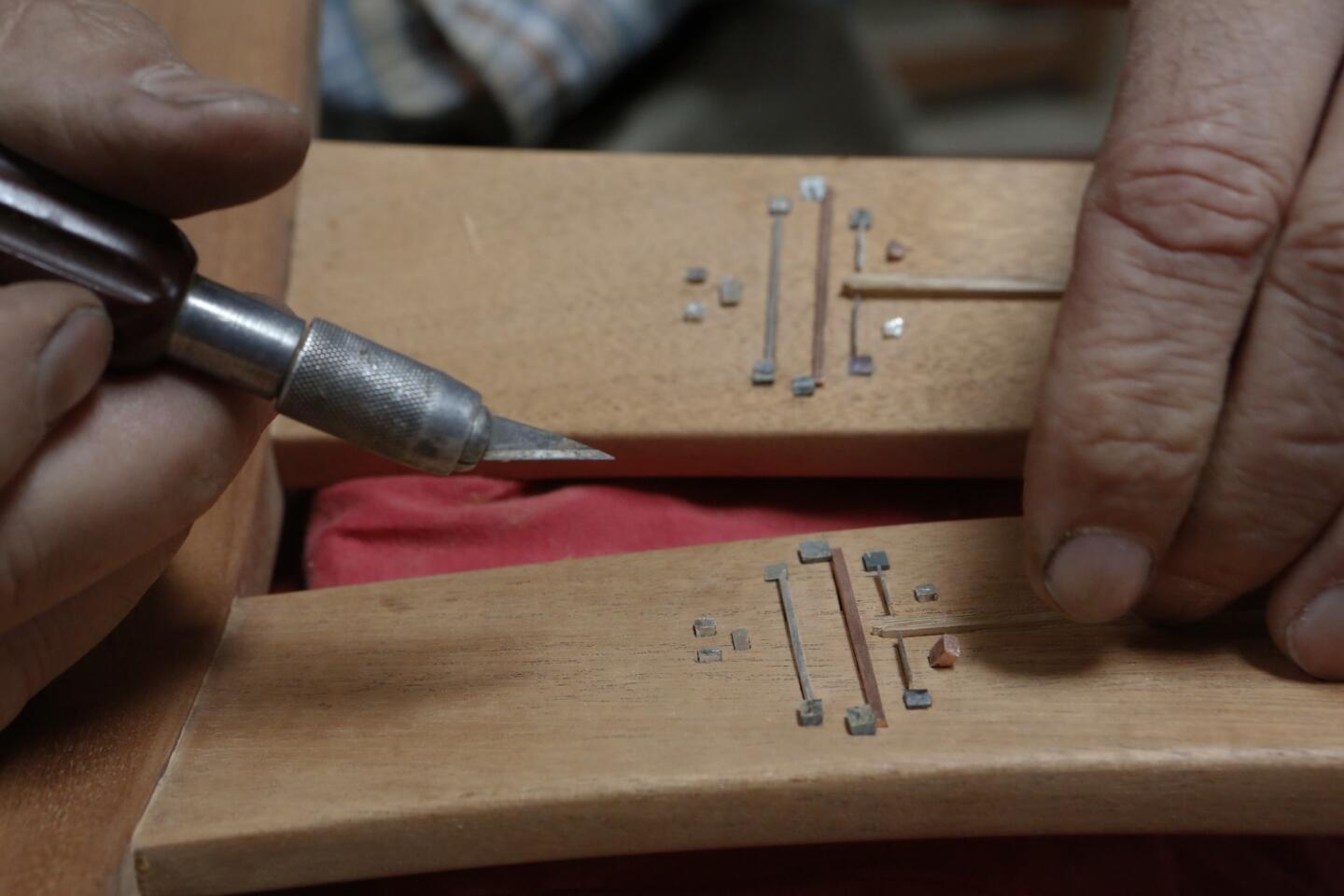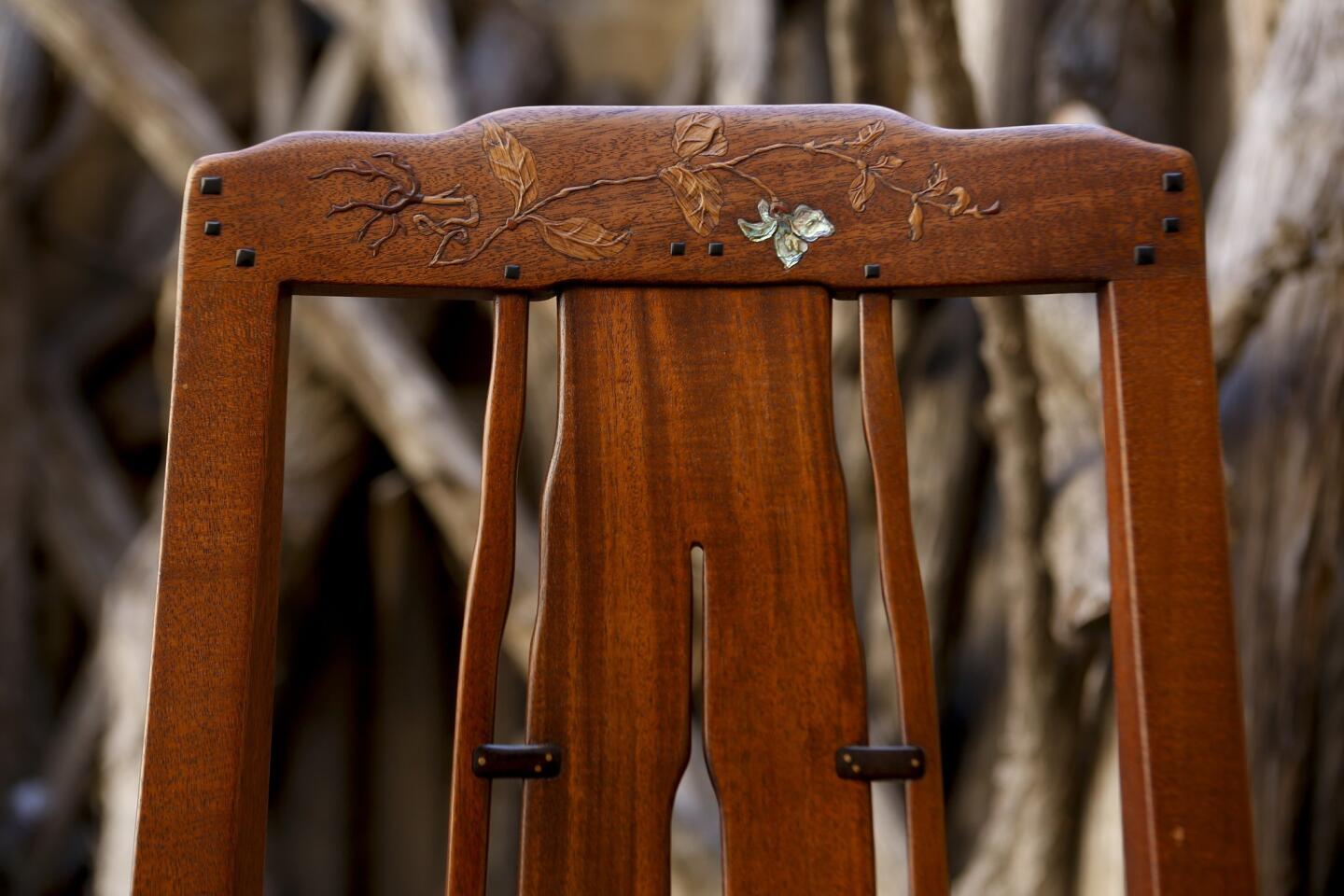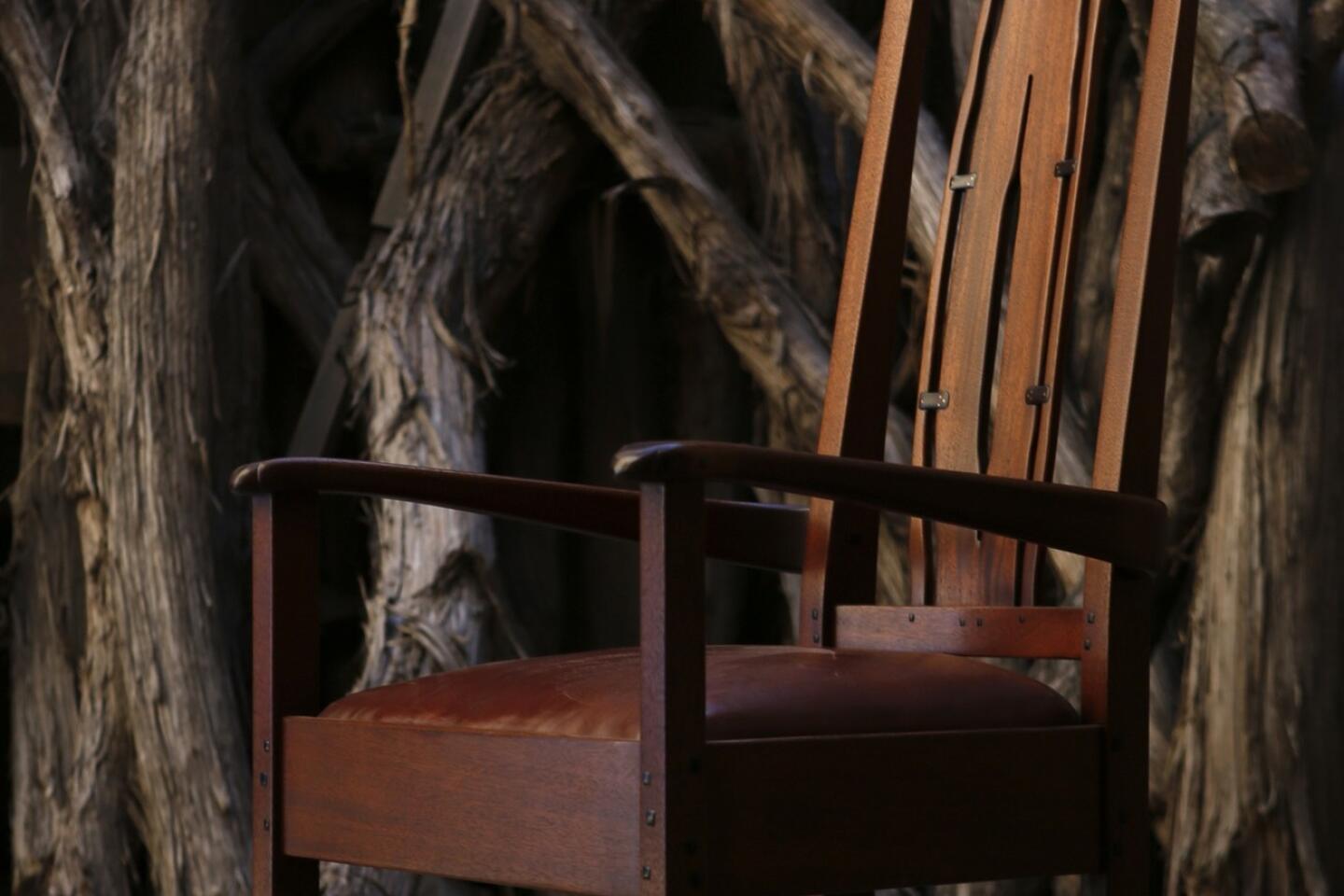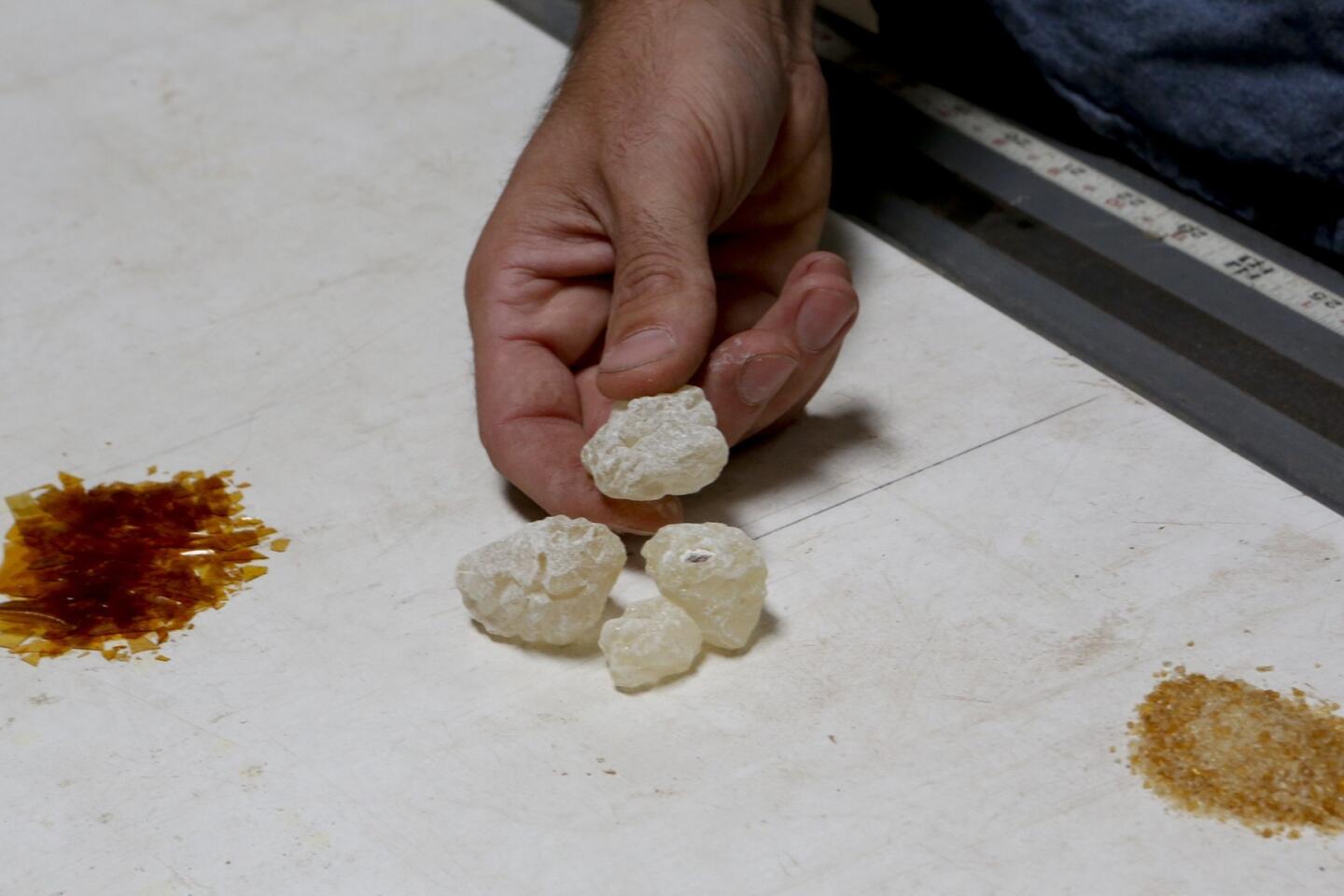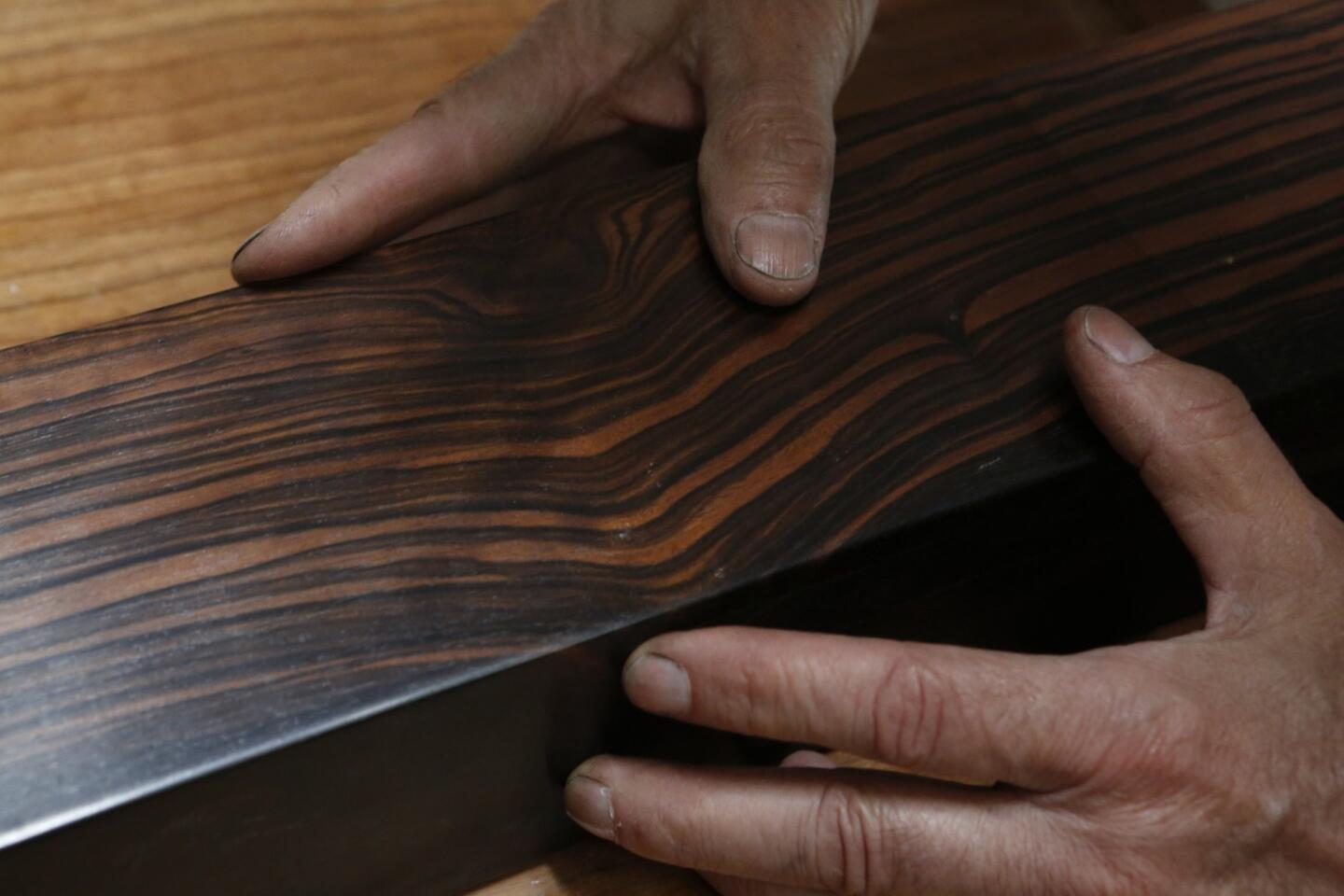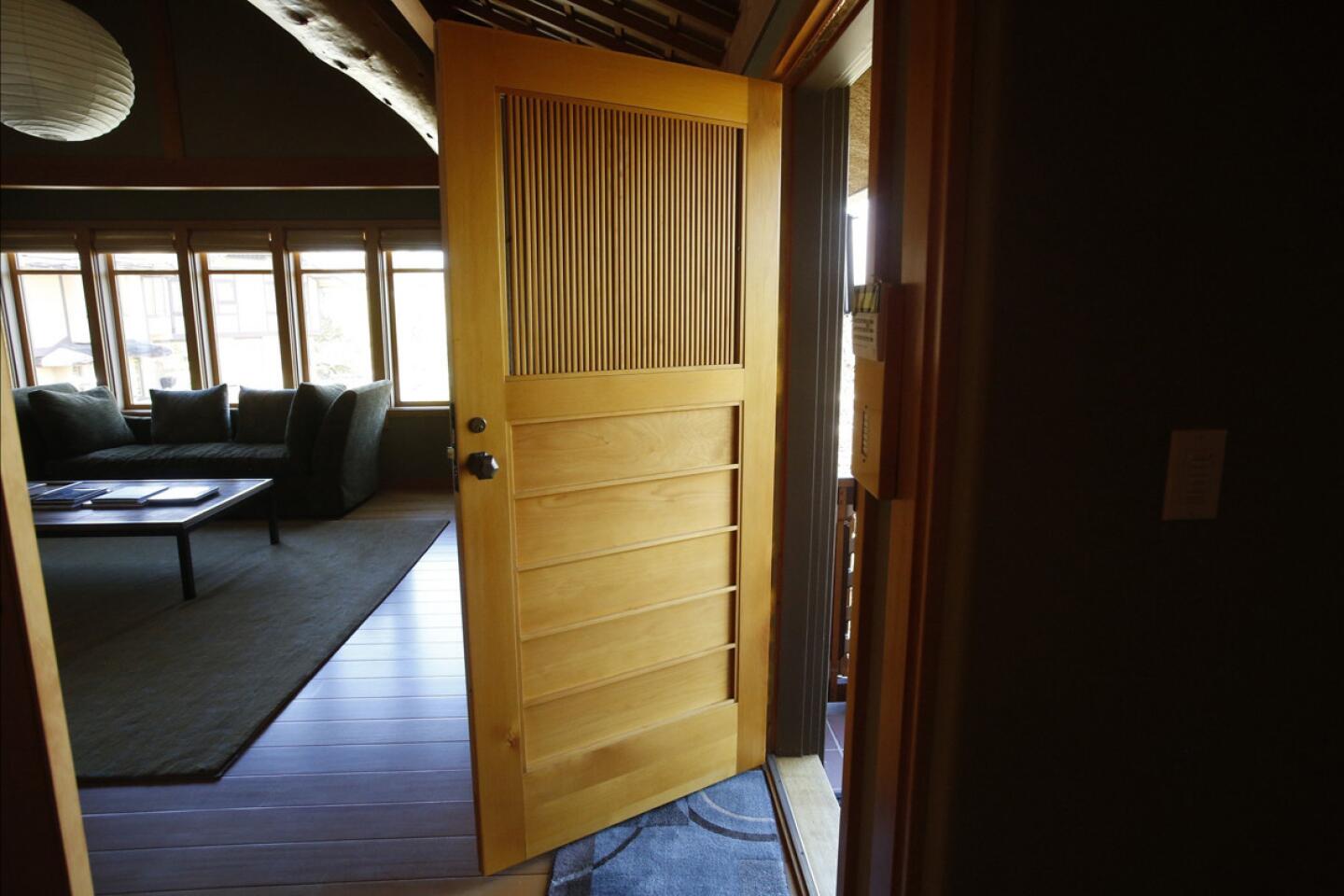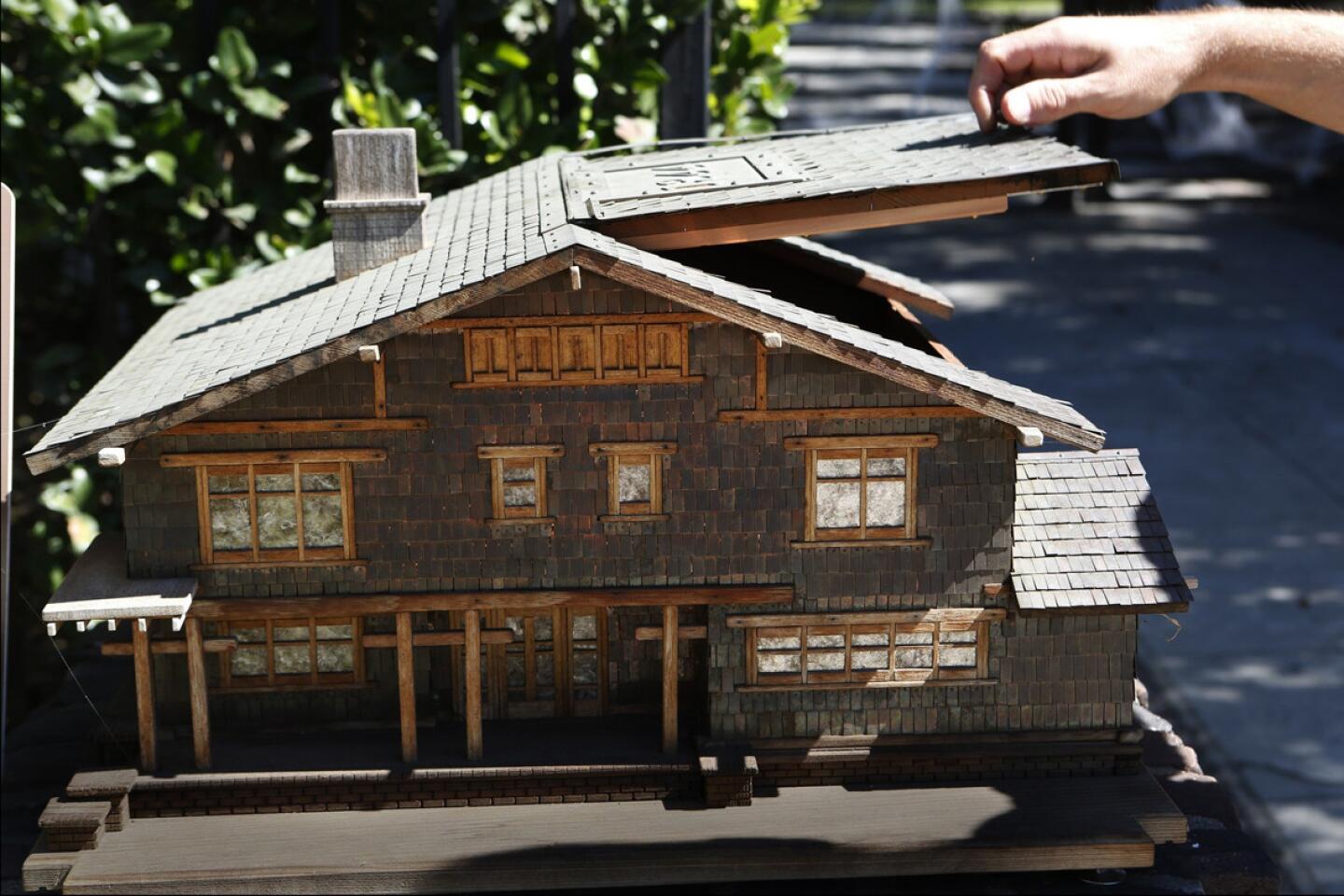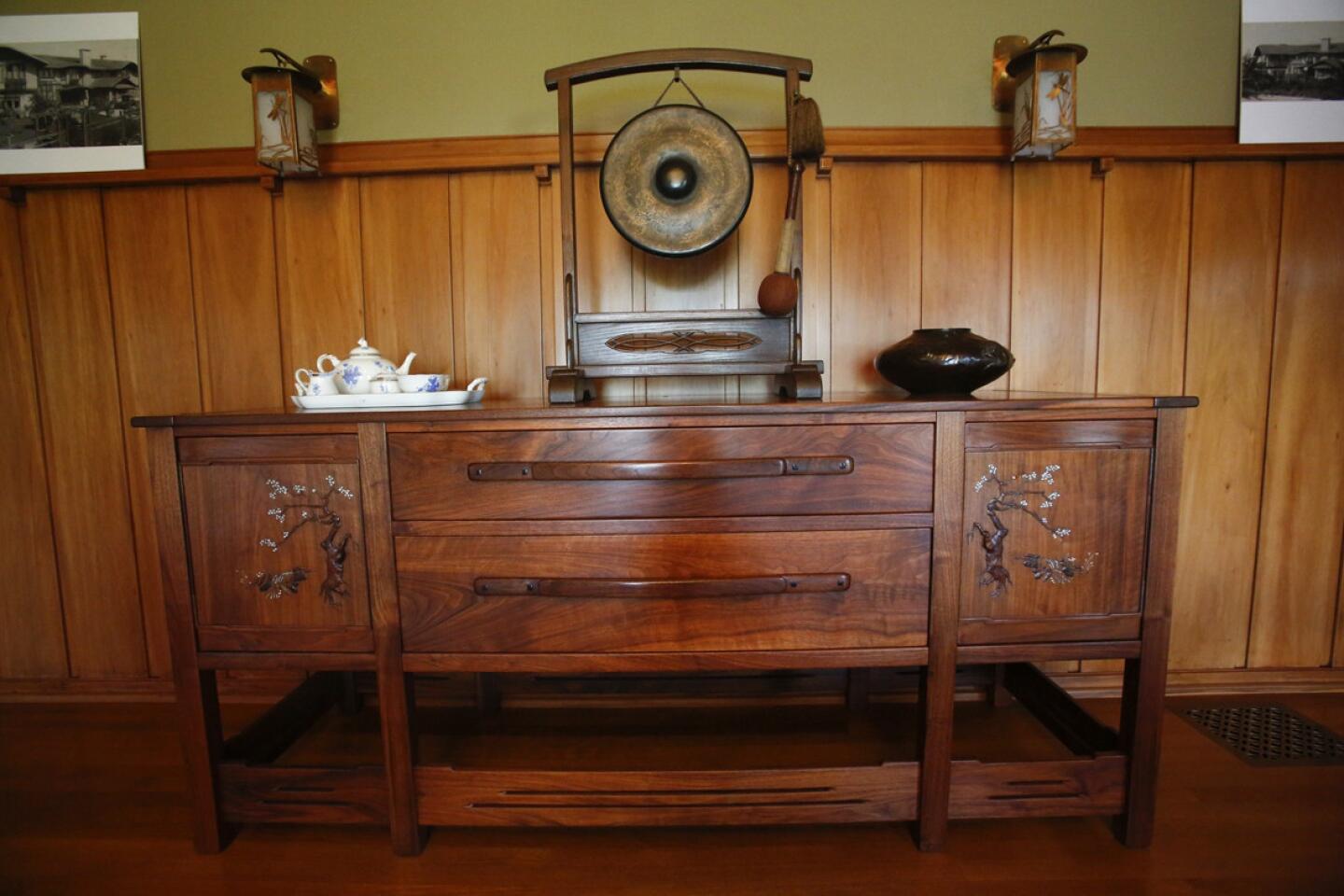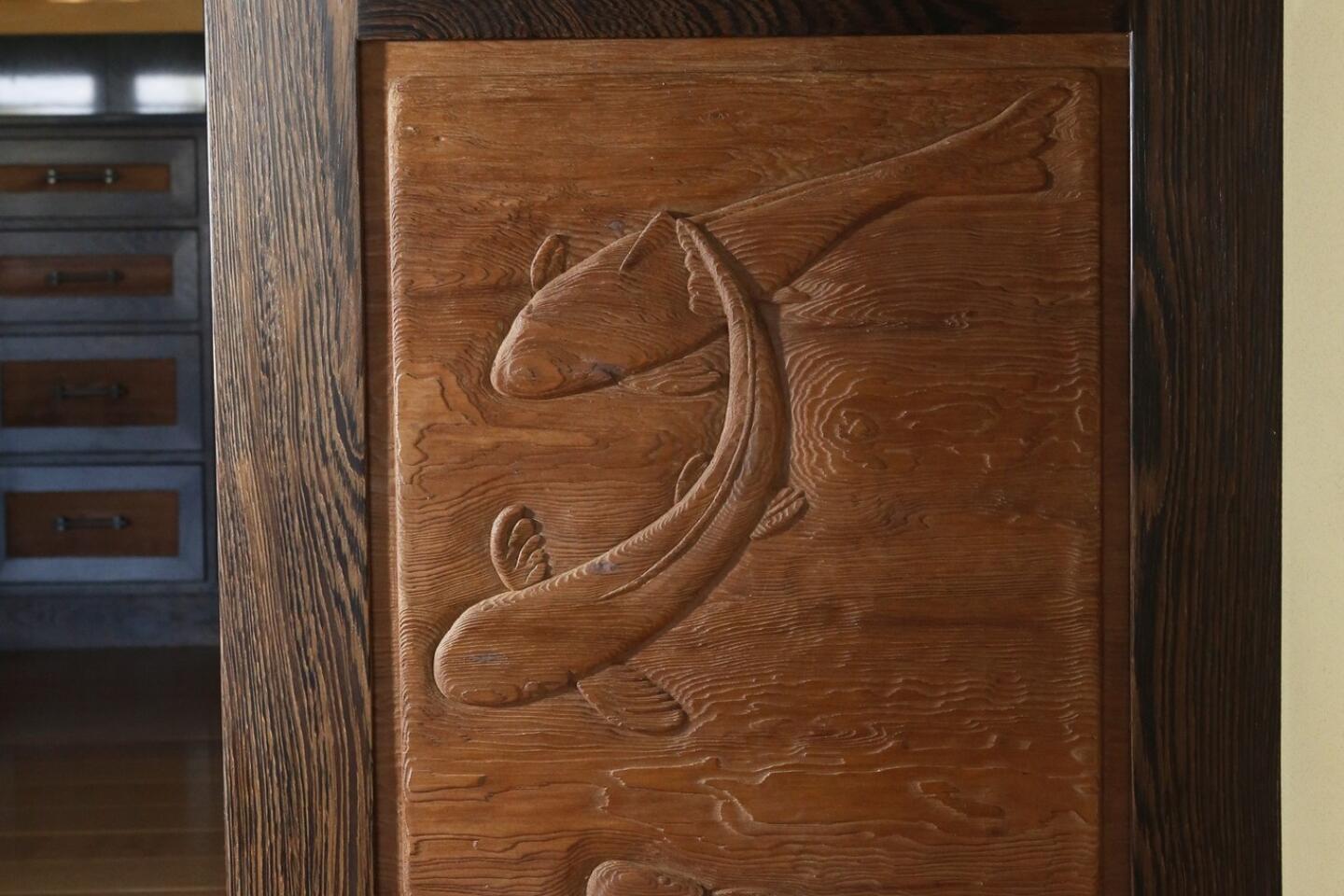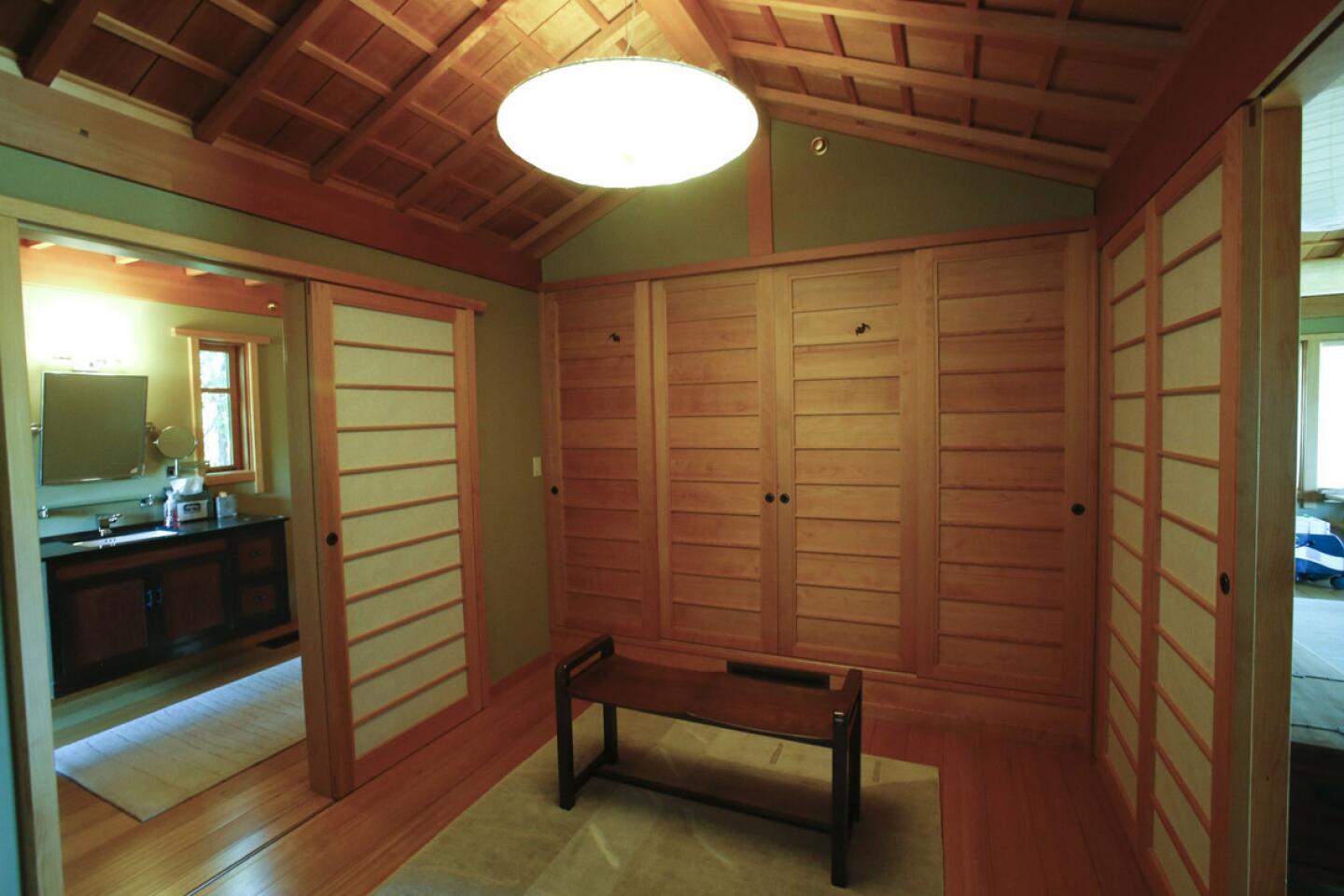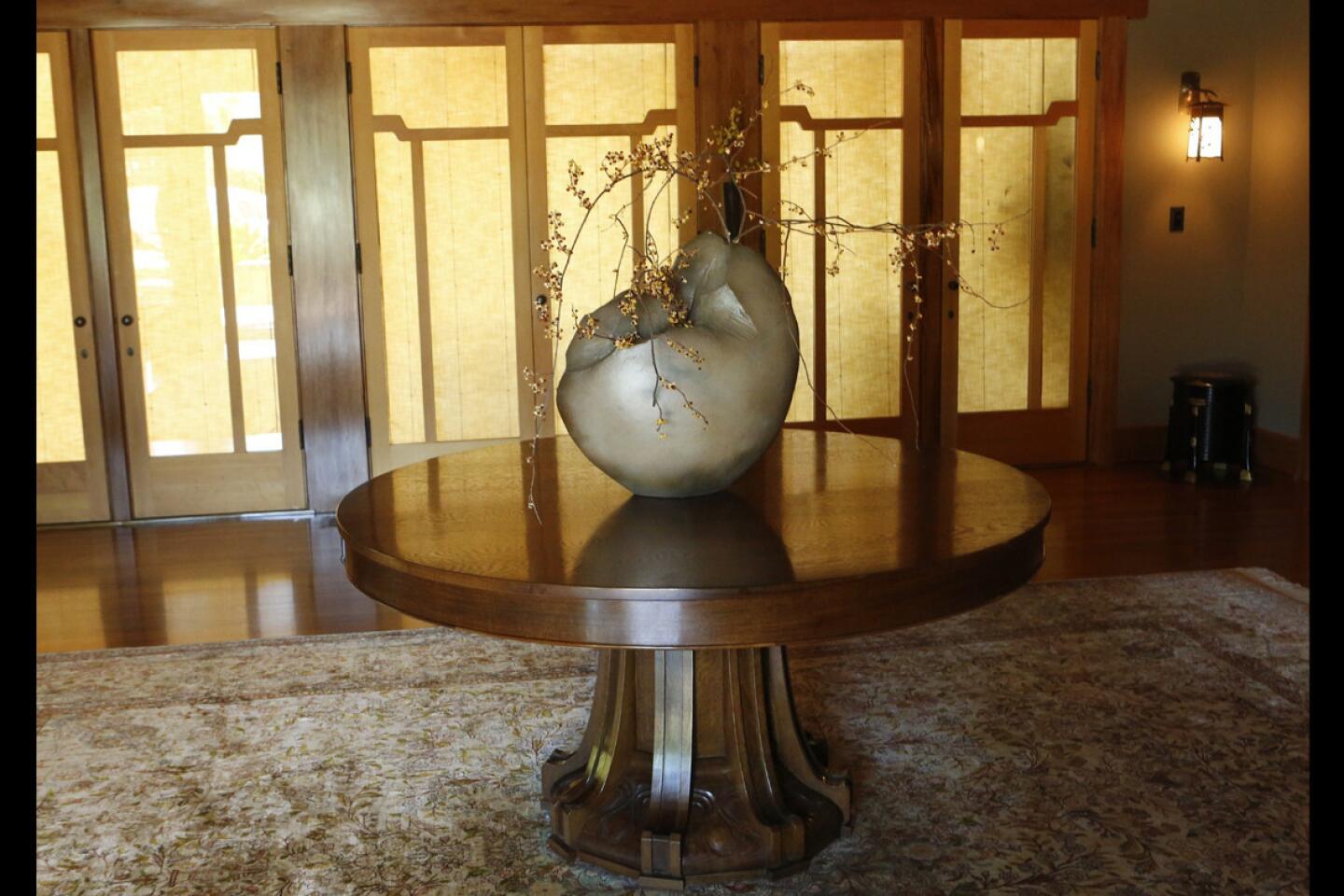Woodworking father restores Pasadena bungalows; son carves own path
- Share via
In Pasadena, where so many houses are not just homes but beloved cultural legacies, a man whom Gamble House director Ted Bosley calls “our living treasure” continues to quietly ply his craft at age 65.
Jim Ipekjian is a master woodworker, largely self-taught, supremely self-effacing. He considers himself a cabinetmaker, not the artist so many of his admirers claim he is. Single-handedly, Ipekjian has helped restore and, in some cases, bring back to life many of Pasadena’s early-20th century “ultimate bungalows” — including, most famously, the Blacker House — created by Arts and Crafts architect-designers Charles and Henry Greene.
He’s not quite alone these days, however. Jim’s 31-year-old son, Jack, has joined the profession, and works by his side — and yet, not exactly by his side. At the unmarked North Fair Oaks Avenue workshop Jim built more than 30 years ago, where he does business as Ipekjian Custom Woodwork, a new shingle of sorts has gone up. Recently Jack officially set up his own business at that address, under the name Pasadena Woodworks, where he intends to sell his own furniture and furnishing designs.
But while those in the Arts and Crafts community are delighted to see signs that the Ipekjian torch is being passed to the next generation, Jim and Jack are quick to point out that Ipekjian & Son this is not.
While Jim does custom orders, mainly continuing his famous Greene and Greene restoration and reproduction work, Jack is moving in a distinctly more embellished style. Although he took the lead in producing a custom set of Midcentury Modern-style cabinets that just went out the shop door and has learned much about the Greene and Greene style, Jack is “enamored,” he says, of inlay and French boiserie, the art of intricate relief wood panel carving popular in the 17th and 18th centuries. “Jack was not born in the right century,” Jim interjects, with a grin.
“I don’t really have an interest in doing reproduction work like my dad has done,” the younger Ipekjian says. “It is the most beautiful stuff I’ve ever seen, and I have the utmost respect for it. But sometimes you’ve got to build for your time.”
Among the items Jack is developing for his fledgling business are live-edge slab tables crafted from the 100-year-old, 50-foot Blacker House Bermuda cedar tree that had to be taken down several years ago (prices starting at $5,000 for an 8-by-3-foot table); solid white oak 3-by-3-foot planter boxes with cross-pinned mortise-and-tenon joinery and custom-made paint ($3,000); and Jack’s passion, boiserie panels with his own technique of inlaying three-dimensional relief design, which will run $300 per square foot.
But Jack is quick to add: “We don’t turn up our noses at meat-and-potatoes jobs like doors and sashes. We’re not that kind of shop.”
The Ipekjians are natives of Pasadena and products of its school system. Jim’s one and only wood shop class came in summer school between seventh and eighth grades, but he graduated from Pasadena City College with a degree in machine shop technology. His first job was as an aerospace industry model maker. When his dentist asked if Jim could build him a Chippendale-style highboy, he jumped at the chance. After a year and a half of work, for a few hundred dollars and his dental work, the highboy was done and Jim took up a new profession as a woodworker.
It was the work he did in the restoration of the Greene and Greene Duncan-Irwin House, however, that caught the eye of then-Gamble House director Randall Makinson. The two became lifelong friends and sometime business partners, as Makinson channeled his scholarly knowledge into Jim’s blossoming craftsmanship. The seminal moment for Jim came after Texas billionaire Barton English bought the Greene and Greene’s Blacker House in 1985 only to strip it bare of lighting fixtures, art glass and wood pieces to sell at auction. When Harvey and Ellen Knell bought the Blacker House in 1994 with the intent to restore it and went to Makinson for advice, he brought in Jim. And so began a 20-year relationship of restoration and furniture reproduction, his most complete and impressive body of work, that continues to this day, with Jim even acting as de facto caretaker when the Knells are away.
For Jack, there are memories of “cutting little guns and spears on the band saw” with brother Ben and making 25 cents for every light switch he cut on the machinist’s lathe for the Blacker House. When during college he floated past his dad the idea of a career in woodworking, “He said, ‘Nah, you don’t want to do that,’” Jack recalls. But the bug had bitten.
For years, Jim admits, he had been largely oblivious to his younger son’s interest in becoming a professional woodworker. “Jack more or less showed up out of the blue, from my perspective. When he said he wanted to do this work, I didn’t know what to think.”
Jack was determined, however, and Jim was equally determined that Jack not be his employee but be independent. “He could have access to the shop and to my tools and to my thoughts,” he says. “But I wanted to stress that if he was going to work here, he was going to work for himself.”
“I think it ended up working out the best way possible,” Jack says. “It would be nice for this article if we could say that it was this romantic ideal, this master-apprentice relationship with both of us at the workbench. It is not that. In some ways, it’s something even better than that. My dad is self-taught, and I think that is part of the reason he’s one of the best cabinetmakers there is. He knows the value of exploring and learning on your own.”
Bosley, who says Jim’s “channeling” of the artistry of the Greenes “is almost eerie,” is pleased to see the continuity. “There’s some sort of indescribable something that Jim has in his DNA that he passed on to Jack that puts their work in a class of their own,” Bosley says.
